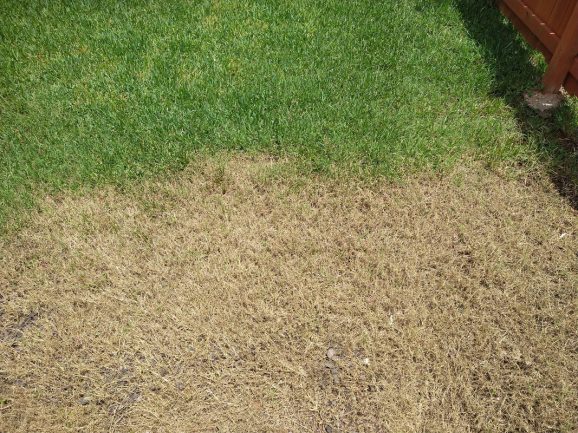Atrazine is a widely used herbicide that controls broadleaf and grassy weeds. It is predominantly used in agriculture to protect crops like corn and sugarcane from invasive plants. Atrazine works by inhibiting photosynthesis, effectively starving the plants.
What is a Bermuda Grass

Bermuda grass is a hardy, warm-season turfgrass known for its durability and resilience. It is commonly found in lawns, sports fields, and pastures due to its ability to withstand heavy foot traffic and harsh conditions. Bermuda grass spreads rapidly through both seeds and stolons, making it a robust choice for ground cover.
Will Atrazine Kill Bermuda Grass?
Bermuda grass is pretty resilient and can withstand a lot, including some herbicides. Atrazine can stress Bermuda grass, potentially weakening it, but it’s unlikely to kill it outright. Think of atrazine like a mild flu; it might slow Bermuda down, but it won’t knock it out completely.
Types and Categories
Varieties of Atrazine Products
Atrazine products come in various formulations, including liquid concentrates, granular forms, and wettable powders. Each type has specific applications and usage guidelines tailored for different weed control scenarios.
Types of Bermuda Grass
There are several types of Bermuda grass, including Common Bermuda, Hybrid Bermuda, and Drought-Resistant varieties. Each type has unique characteristics, such as growth habits, leaf texture, and resistance to environmental stressors.
Usage Categories of Atrazine
Atrazine is categorized based on its application method and target weed species. Categories include pre-emergent herbicides, which prevent weed seeds from germinating, and post-emergent herbicides, which target established weeds.
Symptoms and Signs


Effects of Atrazine on Bermuda Grass
When Bermuda grass is exposed to Atrazine, it can exhibit signs of stress and damage. The herbicide’s impact on Bermuda grass depends on several factors, including the concentration used and the grass’s health.
Visual Signs of Damage
Damage to Bermuda grass from Atrazine exposure typically includes yellowing of the leaves, stunted growth, and in severe cases, complete dieback of the grass. These symptoms are similar to those seen in weeds treated with Atrazine.
Timeframe for Symptoms to Appear
Symptoms of Atrazine damage can appear within a few days to a couple of weeks after application, depending on environmental conditions such as temperature and rainfall, which can influence the herbicide’s activity.
Causes and Risk Factors
Reasons for Using Atrazine
Atrazine is often used to control broadleaf and grassy weeds that compete with crops and desirable turfgrass. Its effectiveness in inhibiting weed growth makes it a popular choice for both agricultural and residential applications.
Environmental Impact
While Atrazine is effective in weed control, it can have significant environmental impacts. Runoff from treated areas can contaminate water sources, affecting aquatic ecosystems and potentially entering the human water supply.
Risk Factors for Bermuda Grass
Using Atrazine on or near Bermuda grass poses risks, particularly if the herbicide is applied incorrectly or at too high a concentration. Environmental factors such as wind drift and runoff can also result in unintentional exposure of Bermuda grass to Atrazine.
Diagnosis and Tests
Soil Testing
Conducting soil tests can help determine if Atrazine residues are present in the soil. Soil testing is essential for diagnosing herbicide contamination and assessing soil health before planting or replanting Bermuda grass.
Identifying Atrazine Residue
Identifying Atrazine residue in the soil involves using specific chemical analysis techniques. These tests can detect the presence and concentration of Atrazine, helping to assess the potential risk to Bermuda grass.
Bermuda Grass Health Assessment
Assessing the health of Bermuda grass involves examining its growth patterns, color, and overall vigor. Regular health assessments can help identify early signs of stress or damage caused by herbicides like Atrazine.
Treatment Options
Alternatives to Atrazine
Several alternatives to Atrazine can effectively control weeds without posing a risk to Bermuda grass. These alternatives include organic herbicides, cultural practices, and integrated pest management strategies.
Mechanical Weed Control
Mechanical weed control methods, such as mowing, hand-pulling, and tilling, can help manage weed populations without the use of chemical herbicides. These methods are labor-intensive but can be effective in maintaining healthy turf.
Biological Control Methods
Biological control methods involve using natural predators or competitive plants to manage weed populations. These methods can be sustainable and environmentally friendly alternatives to chemical herbicides.
Safe Application Techniques
Applying Atrazine safely involves following label instructions carefully, using appropriate application equipment, and avoiding conditions that can lead to drift or runoff. Proper application techniques can minimize the risk of damaging Bermuda grass.
Preventive Measures
Preventing Bermuda Grass Infestation
Preventing Bermuda grass infestation involves maintaining healthy turf through proper mowing, fertilization, and irrigation practices. Dense, healthy grass can outcompete weeds, reducing the need for herbicides.
Safe Usage Guidelines for Atrazine
Safe usage guidelines for Atrazine include applying it at the correct time of year, using recommended dosages, and ensuring it is not applied on windy days or near water sources. These guidelines help prevent unintended damage to desirable plants.
Best Practices for Lawn Maintenance
Best practices for lawn maintenance include regular mowing, watering, and fertilizing. These practices help maintain a healthy, dense lawn that can resist weed invasions and recover quickly from any damage.